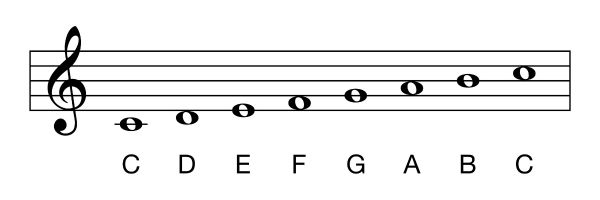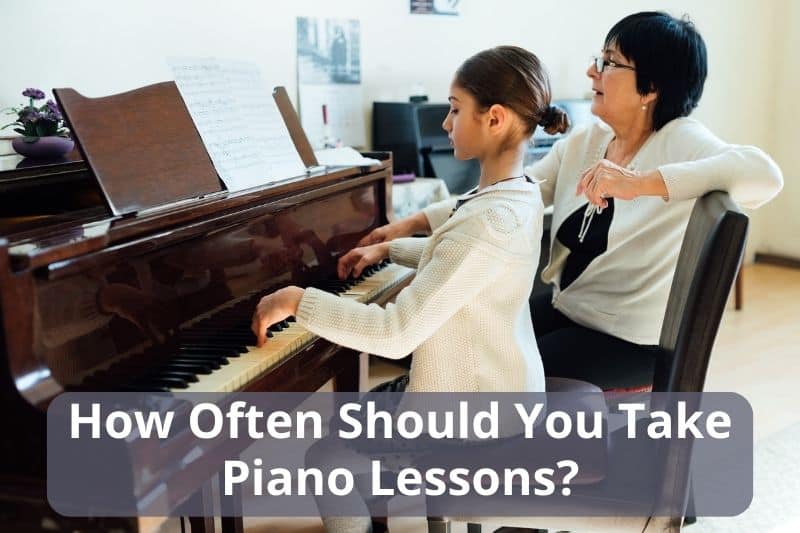Are you dreaming of playing beautiful melodies on the piano but don’t have the budget to pay for expensive lessons or an expensive instrument? Don’t worry; you’re not alone! There are many ways to learn to play piano without breaking the bank.

This article will explore some of the most cost-effective and best ways to learn piano, from online lessons and apps to self-teaching methods. You’ll discover how affordable it can be to develop your musical abilities in the comfort of your own home. So grab your keyboard or piano, and let’s embark on a budget-friendly musical journey!
Whether you’re an absolute beginner or looking to fine-tune your skills, you’ll find numerous resources tailored to your needs. Many online platforms, such as Pianote or Skillshare, offer a variety of piano lessons taught by experienced instructors. These lessons often include learning music theory and popular songs while catering to your skill level, making your learning experience enjoyable and productive.
Cheap Piano Learning Methods
Learning to play the piano can be done on a budget. In fact, several cost-effective methods are available for beginners or those looking to improve their skills. In this section, we’ll discuss three cheap approaches to learning piano: online piano courses, traditional piano lessons via Skype, and teaching yourself.
Online Piano Courses
Online piano courses are an affordable and effective way to learn piano at your own pace. With various apps and websites offering piano lessons, you can choose the one that suits your needs and budget. A popular choice is Playground Sessions, endorsed by successful musicians and offering classes that teach popular songs and music theory.
Other options include Pianote (my current favorite!) Skoove, and Flowkey. These platforms typically offer free trials or affordable monthly subscriptions, allowing you to choose the best plan for your learning goals.
Live Piano Lessons via Skype/Zoom
If you prefer having a personal teacher but find in-person lessons expensive, consider Skype piano lessons. Many teachers offer remote lessons at a lower cost than in-person classes, giving you access to skilled instructors from the comfort of your home.
You can be in a different country or time zone than your teacher. This can be really helpful if you work unsocial hours.
To find a suitable teacher, quickly read this article and search for instructors specializing in your preferred genre.
Remember to discuss your goals, dedication, and preferred practice time with the teacher to ensure you make the most of this affordable learning method.
Teach Yourself Piano
Teaching yourself piano can be the cheapest method, requiring only an investment in a piano or keyboard and some learning materials. Start with online video tutorials on sites like YouTube for learning the basics, such as proper finger positions and scales.
There are many free resources, including websites, eBooks, and even guides on music theory, to help you advance.
There are also many excellent piano technique books you can buy cheaply that help you develop great habits and improve your playing.
While learning piano independently might take more motivation and dedication, success comes down to practice, patience, and an enjoyable learning experience.
Whatever method you choose, remember that learning piano is a lifelong journey, and the key is to find the right balance between affordability and an effective learning path.
Finding the Right Piano or Keyboard
When learning to play the piano, the first step is choosing the right musical instrument for you. In this section, we’ll discuss the benefits of keyboards versus pianos and how to find the right one for your needs.

Benefits of Keyboards vs. Pianos
Both pianos and keyboards have their advantages and disadvantages. Here are some key points to consider when deciding between the two:
- Cost: Keyboards are generally more affordable than traditional acoustic pianos. You can find a good, basic 88-key weighted digital piano from a recognized brand for $500-$600. In contrast, a quality acoustic piano often costs several thousand dollars.
- Portability: Keyboards are lightweight and portable, making them ideal for those with limited space or needing to move their instrument frequently. Whereas pianos are heavy and bulky and require a dedicated space.
- Maintenance: Keyboards require little to no maintenance, while acoustic pianos need regular tuning and upkeep, which can be costly.
- Features: Many keyboards have helpful features like built-in metronomes, recording capabilities, and various instrument sounds. On the other hand, acoustic pianos offer an authentic playing experience with a unique touch and tone.
The right instrument depends on your preferences, budget, and goals. A keyboard might be ideal if you’re a beginner and want a cost-effective option to start learning. Investing in an acoustic piano could be the better choice if you’re more experienced and looking for an authentic piano feel.
Finding the Right Piano or Keyboard
Once you’ve decided between a piano and a keyboard, it’s time to find the specific instrument that fits your needs. Here are a few things to consider:
- Determine your budget. Keep in mind that even the most basic piano or keyboard can help you learn the fundamentals.
- If choosing a keyboard, consider the number of keys and whether they are weighted. An 88-key weighted keyboard is recommended for a more authentic feel, but beginners can start with a 61-key keyboard.
- If choosing a piano, look for a reputable brand and consider factors such as size, touch, and tone.
- Try out different instruments in person to get a feel for what you like and what’s comfortable for you.
- Remember, you don’t need to buy a brand-new instrument. You can find many good quality 2nd hand ones either in-store or online.
- Finally, watch for the sales to get the best bargains!
Remember, you can always upgrade your instrument as your skills improve and your needs change. The important thing is to start with a piano or keyboard that fits your current goals and encourages you to practice and enjoy playing.
Selecting a Learning Strategy
You have a few options when it comes to learning piano on a budget. This section explores the benefits and drawbacks of retaining a teacher and pursuing self-learning approaches.
Retaining a Teacher
Working with a teacher can provide expert guidance and support, ensuring you learn the correct techniques right from the start. However, experienced in-person piano teachers can be expensive, charging up to $30-50 per lesson. To make the most of your investment while sticking to a budget, consider the following tips:
- Establish clear goals for your lessons. For example, you may want to focus on learning specific pieces or improving your understanding of music theory.
- Find a teacher who shares your motivation and musical interests. If you’re passionate about jazz or rock music, look for a teacher with expertise in those genres.
- Take advantage of group lessons or workshops, which can be more affordable than one-on-one sessions.
Remember, finding the right teacher is crucial for maintaining your dedication to learning the piano, so invest time finding the best fit for your needs and budget.
Self-Learning Approaches
Suppose retaining a teacher isn’t feasible for you, or you prefer a more flexible, self-guided approach. In that case, plenty of self-learning methods are available at little to no cost. Here are some options to consider:
- Online piano lessons – Websites and apps like Flowkey and Simply Piano offer interactive lessons and comprehensive song libraries to help you learn at your own pace.
- YouTube tutorials – There are countless YouTube channels that offer free piano lessons, covering everything from basic techniques to advanced playing.
- Books and sheet music – Visit your local library or find free/cheap online resources to study music theory, practice exercises, and learn new songs.
When taking a self-learning approach, staying motivated and dedicated to your practice is essential. Setting specific and measurable goals, such as practicing 5 times a week, learning a new song each month, or mastering a particular technique, can help you stay focused and track your progress.
Learning Music Theory
When you’re exploring the cheapest way to learn piano, understanding music theory is essential. We’ll focus on two key aspects: chords and scales. Don’t worry; I’ll keep it simple and relatable, so you can apply what you learn immediately.
Understanding Chords
Chords are combinations of notes that sound harmonious when played together. You’ll often find them in various music genres, and they give texture to the melody. To learn chords, follow these beginner-friendly tips:
- Start with basic chords like C, F, and G major.
- Experiment with different chord combinations on your piano.
- Pay attention to the sound of each chord to build your hearing skills.
For instance, a C Major chord contains the notes C, E, and G. Try playing these notes together and listen to the harmony they create. As you progress, you’ll start to recognize different chord patterns in your favorite songs.
Scales

Scales are sequences of notes played in ascending or descending order. They’re essential for building finger strength and dexterity and understanding how melodies are constructed. To learn scales effectively, remember these tips:
- Begin with the C Major scale, which contains only white keys.
- Practice playing the scale with both hands, starting slowly and gradually increasing your speed.
- Once you’re comfortable with the C Major scale, move on to other major and minor scales.
For example, the C Major scale includes the notes C, D, E, F, G, A, and B. Start by playing these notes in ascending order, then reverse the order to descend the scale. With practice, your fingers will glide effortlessly across the keys, and you’ll better understand music theory.
Age Considerations
When learning piano, age significantly determines the most cost-effective approach for children and adults. Factors such as motivation, access to a teacher, and learning pace vary depending on age.
Children vs. Adults
Children often have an easier time learning new skills and adapting to new challenges, making them more receptive to learning piano. Most experts agree that children between six and eight years old are the ideal age to start piano lessons, as they’ve already gained some experience with formal education and interacting with adults.
For adults, the learning process might require more motivation and dedication. However, there is always time to learn. With regular practice and the right approach, adults can also efficiently learn to play the piano at any age. It’s recommended for beginners to practice around 30 minutes each day, five times a week.
Child learners:
- Generally more receptive to learning new skills
- The optimal age to start is between 6 and 8 years old
- Use of age-appropriate teaching methods
Adult learners:
- May require more motivation and dedication
- Benefit from regular practice (30 minutes/day, 5 times/week)
- Use of tailored teaching methods for adults
Finding a teacher is crucial for both children and adult beginners. A dedicated, patient, and qualified piano teacher is essential for children. This ensures the student receives the appropriate guidance. For adults, a teacher who specializes in teaching adult students will help tailor lessons to meet their unique needs and goals.
Cost-effective options for both groups include group lessons, online tutorials, and self-teaching through apps or websites rather than private one-on-one lessons. For instance, picking up essential skills and techniques from online resources and then practicing these skills on a keyboard can significantly reduce the cost of learning piano.
Final Thoughts
Learning piano on a budget is possible with the right resources and approach. Here’s a quick recap to keep in mind as you embark on your musical journey:
- Choose affordable learning methods: Consider online courses and self-teaching with a keyboard, as they are generally cheaper than traditional lessons.
- Opt for free resources: Numerous free online tutorials and courses can help you learn the basics and develop your skills.
- Use technology: Use MIDI-compatible apps and software to enhance your learning experience.
- Practice regularly: No matter which learning method you choose, dedicating consistent time to practice is crucial to your progress.
- Stay motivated: Keep in mind that learning an instrument might be challenging at times, but maintaining a positive attitude and perseverance will take you a long way.
Finding the cheapest way to learn piano doesn’t mean compromising on quality. Invest in a decent keyboard, explore online resources, and be open to various learning methods. All it takes is dedication, consistency, and a touch of creativity to make your budget-conscious piano learning journey successful!



